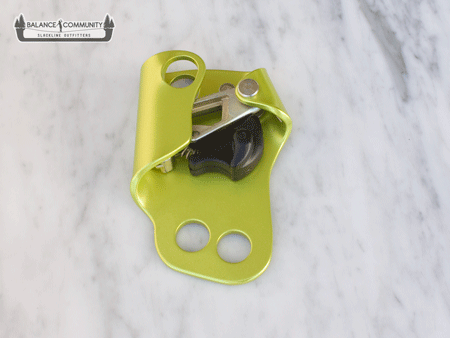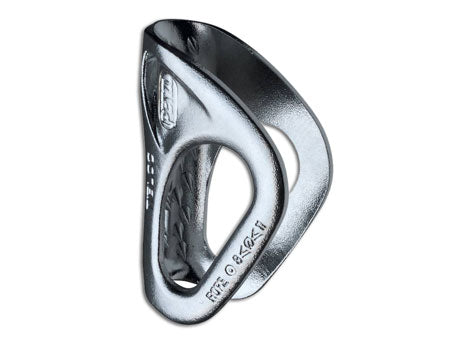You have no items in your shopping cart.
0
You have no items in your shopping cart.
After looking at the main pulleys and the brake for our pulley systems, it's time to dive into the subject of multipliers.
The multiplier part of your pulley system is an essential component that is often overlooked. This is the part of your pulley system that will be adding the most mechanical advantage, so it's very important to get quality components that will ensure you get the least friction possible.
First off, I want to explain the multiplier concept a bit, as it can often be very confusing. Basically, a multiplier is just another pulley system that is attached to your main pulley system. For instance, if you have a set of double pulleys for your main pulleys setup in a 5:1 configuration (the rope starts on the line side rather than the tree side), and you have a single pulley for your multiplier, what you are basically doing is grabbing onto the last rope coming into the brake system and attaching a pulley system here. This makes pulling on this rope 3 times easier than just grabbing onto the rope and pulling. Thus, you are multiplying the whole mechanical advantage by 3! This is a very large increase over our previous 5:1 mechanical advantage. Our total theoretical mechanical advantage is now at 15:1. If you are not familiar with this syntax, what that means is that for every 100 lbs of force you pull on the tail of your pulley system, 1500 lbs is being applied on the connection point from your pulleys to the line. This is a great way to approximate the tension in your line, by estimating the force you are applying to the tail of your pulley system rope, but that's a whole other topic.
Now on to the actual components of the multiplier. A multiplying system consists of 3 basic components: a rope grab, a connector, and a pulley. Some very basic multipliers will drop or combine one of these components, but the concept is still the same. I will go into depth about two of these components below.
There are various devices and methods for this part of the multiplier, each with their pros and cons. The thing to remember is that this point in the system will be experiencing shock-loads of force that is equal to two times whatever you (and your friends) are pulling on your rope. This can be potentially hazardous to your rope if you do not have a good device. I will describe three basic methods for grabbing the rope with products offered at Balance Community that use these methods.

Some rope-grabs on the market have camming units with sharp teeth for grabbing the rope. These devices work extremely well if used correctly, but can also destroy your rope if used incorrectly. They are usually a bit more pricey, but are highly effective for multiplier rope-grabs. The product that we will look at is the Heightec Compact Ascender.
The cool thing about this rope-grab is that it's very easy to use and can be installed anywhere along the rope without any trouble what-so-ever. It's also got a strength rating of 4 kN on smaller ropes (8-9mm), all the way up to 6.5 kN on larger ropes (12-13mm). These forces are virtually impossible to exceed when pulling your pulley system tail with a 3:1 multiplier installed.
Another nice feature of the Compact is that the front hole is great for installing a pull-cord for resetting your multiplier after pulling it all the way to the brake. This is a handy thing, especially when the anchors for your line are well above your head.
Yet another reason why the Compact is the superior rope-grab is that the top of the device is extremely low profile, which makes it great for avoiding the knot on the line-side of your pulley system. Some rope-grabs are very tall and tend to get stuck on the knot, which can cause them to not grab the rope properly and potentially rip the sheath off of your rope.

Another type of rope-grab on the market is the Petzl Tibloc, which utilizes a smashing principle to grab onto the rope. How this works is that there is a set of sharp teeth on one side of the device where the rope is inserted and then a set of holes on the other side of the rope where you connect a carabiner. When force is applied to this carabiner in the correct direction, it slides down onto the rope, smashing the rope beneath it onto the spikes on the other side of the Tibloc. The more force that is applied, the harder the carabiner will smash the rope. This principle works especially well on larger sized ropes (10mm - 11mm) as there is more rope for the carabiner to travel. This device is extremely lightweight and works pretty well if installed correctly onto the rope. However, if you don't apply a small amount of force to the tail of the rope before doing a large pull, locking the device in place, you can rip the sheath of your rope right off. I have seen this happen numerous times. Other than this, the device works pretty well.
One thing that I find annoying about this device is that it requires that your wrap your carabiner around the rope to get the most strength out of the smashing effect. This wrapping makes it extremely difficult to reset the multiplier. It also gets in the way of the knot on the pulley system when resetting. This adds to the danger of potentially ripping the sheath off of your rope if a small amount of tension is not applied before pulling on the rope.

The last type of rope-grab I will cover is the friction rope-grab. There are a few different methods for this type (prusik knot, klemheist knot, etc...), but they all work on the same principle. The way it works is you take a small piece of rope and create a loop (or get a premade Prusik) and do either a Prusik Knot, or Klemheist Knot on the last tail of rope coming from your main pulleys, going to your brake. When you apply force to this knot, it will cinch-up around the rope and grab onto it via friction. The harder you pull, the harder the knot will grab. This is a very effective, lightweight, and cheap method for grabbing onto your rope.
Although the friction method is extremely useful and very cheap, there are many downsides to it. First off, since it's a knot, Prusik's and Klemheist's are extremely hard to reset. This makes it very difficult to tension your line when your anchors are well overhead. Another downside is that a prusik can and will separate the sheath of your rope from the core, which doesn't effect the breaking strength of the rope, but it causes unwanted movements inside the rope, which can lead to micro-abrasions to the load-bearing core yarns.
Another key component to the multiplier system is the multiplier pulley itself. Usually just one single pulley will be sufficient for a strong multiplier, but sometimes using a double pulley is necessary. We will discuss these different methods in a different post. I would like to go into what characteristics to look for in a single pulley to get the most out of your multiplier.
As with your main pulleys, there are several characteristics that one should look for when deciding on a multiplier pulley. The main ones to consider are bearing type and sheave diameter (the others follow suit with these two).
| Product | Price | Quantity | Options | |||||
|---|---|---|---|---|---|---|---|---|
| Features |
| Availability: |
| Price |
| Options |
| Actions |

← Older Post Newer Post →
0 comments